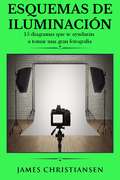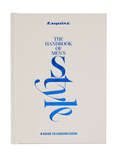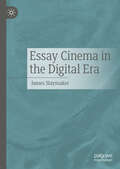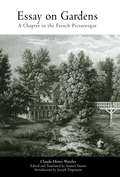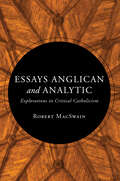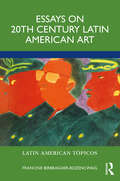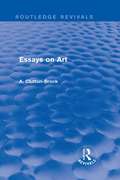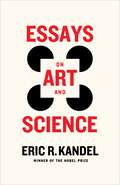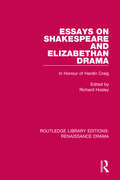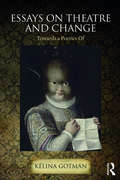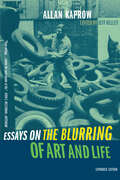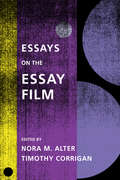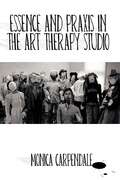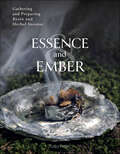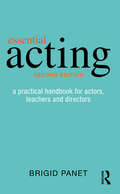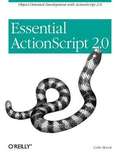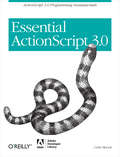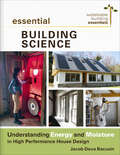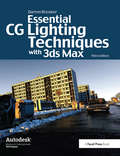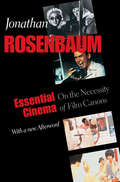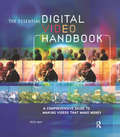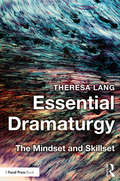- Table View
- List View
Esquemas de Iluminación: 15 diagramas que te ayudarán a tomar una gran fotografía
by James Christiansen¿Cansado de fotografías que salen muy oscuras, muy claras o no del todo “bien”? ¡Mis esquemas de iluminación te ayudarán a hacer mejores fotografías con una iluminación óptima desde hoy! En última instancia, hacer grandes fotografías, sobre todo con los increíbles avances tecnológicos actuales en cámaras, no es tan complicado. Uno de los conceptos fundamentales que tienes que comprender es cómo ajustar la luz correctamente para una foto, y este libro te enseñará cómo hacerlo exactamente con esquemas de iluminación fáciles de seguir. Este libro cubrirá esquemas de iluminación para: •Retratos de bebés •Retratos individuales •Retratos familiares •Rostros •Fotos de mascotas •Fotos de productos (¡estupendos para eBay o Craiglist!) •Siluetas Y mucho, mucho más, ¡incluyendo aún más diagramas y recomendaciones de equipamiento! ¡Deja de tomar fotos malas y empieza a tomar grandes fotos con estos sencillos esquemas de iluminación!
Esquire The Handbook of Men's Style: A Guide to Looking Good
by Esquire Michael B. DoughertyA completely revised edition of the essential manual for dressing—and feeling—your very best, featuring Esquire's signature wit and humor and 200+ photos and illustrationsExpert menswear and grooming advice for young and experienced professionals—from building a wardrobe and discerning clothing quality to self-expression through fashionStyle is a way of speaking to the world. Like it or not, what you wear and how you wear it matters. In this best-selling guide from the editors of Esquire, you&’ll learn how to hone your personal style—and even have some fun while you&’re at it.In this pocket-sized handbook, style-minded individuals will find expert advice on how to:Buy suits and other formal wear for their immediate and long-term needs Navigate an increasingly dressed-down world while still looking your absolute bestAccessorize and style your clothes to level up your outfitsChoose the right clothes for all shapes and sizes and how to make grooming choices to look your best Play with previously gendered pieces like pearl necklaces and embrace genderless dressing trendsDefine menswears trends like Gorpcore, Normcore and Stealth Wealth and decide if they are worth investing in Determine quality and identify different fabrics and materialsCare for you clothes so they last Build a wardrobe and signature style with foundational pieces (a white tee is a must) and standout pieces you loveThroughout readers will find style icons—including classics like Frank Sinatra and George Clooney, and new tastemakers like Donald Glover, Travis Kelce, Yahya Abdul-Mateen II, Harry Styles, and ASAP Rocky—who demonstrate great taste and original personal expression.Visually bold with hundreds of photos and illustrations, this sophisticated reference book is the ideal gift for fashion enthusiasts.
Essay Cinema in the Digital Era
by James SlaymakerThis book explores the impact of digital technology on the essay film in the early 21st century, arguing that the cinematic essay has been associated with technological evolution throughout its history. The author considers the output of four towering figures in essay filmmaking: Harun Farocki, Chris Marker, Chantal Akerman and Jean-Luc Godard, and explores the ways in which these directors utilise aesthetic strategies, editing techniques, and modes of spectatorial address that are rooted in the capabilities of digital technologies. Slaymaker conceptualises the cinematic essay as a self-reflexive mode of nonfiction cinema—one that foregrounds the filmmaking apparatus and the act of its own making, and which thereby launches an inquiry into the ontological nature of the cinematic image, the tools which construct it, and the wider artistic landscape in which it is embedded.
Essay on Gardens
by Joseph Disponzio Samuel Danon Claude-Henri WateletPublished in 1774, Essay on Gardens is one of the earliest texts showing the progressive shift in French taste from the classical model of the gardens at Versailles to the picturesque or natural style of garden design in the late eighteenth century. In this formulation of his ideas concerning landscape, Claude-Henri Watelet describes an ideal farm and also his own very real garden, Moulin Joli, near Paris. He advances the theory that the useful and the pleasurable must be combined in the planning, preservation, and decoration of the land by offering a relatively novel design that uses experimental methods to create a comfortable estate. The result is a horticultural and ecological laboratory that includes a residence, a farm, stables, a dairy, an apiary, a mill, walks, vistas, flower beds, an area reserved for medicinal plants, decorative statues, a medical laboratory, and even a small infirmary for ailing members of the community.Given the wide scholarly interest in the field of garden design and its history, this first English edition of Watelet's small but influential book will interest historians of landscape design as well as students of the history of architecture. Joseph Disponzio's informative introduction to Samuel Danon's masterful translation situates the Essay on Gardens within the framework of other landscape and garden treatises of the late eighteenth century. Although the original text was not illustrated, this edition includes a selection of charming drawings and etchings of Moulin Joli by Watelet himself, Hubert Robert, and others.
Essays Anglican and Analytic: Explorations in Critical Catholicism
by Robert MacSwainExplore the riches at the intersection of Anglican and philosophical theology. In this thought-provoking essay collection, Robert MacSwain explores important connections between Anglican and philosophical theology. Shining a spotlight on the underappreciated theological work of Austin Farrer and David Brown, he brings them into creative conversation with better-known figures such as Joseph Butler, C. S. Lewis, Stanley Hauerwas, and Eleonore Stump. He skillfully leads readers through diverse conceptual territory ranging from the Reformed epistemology of Alvin Plantinga and Nicholas Wolterstorff, to the hiddenness argument of J. L. Schellenberg, to a sacramental vision of human culture and the arts. More broadly, MacSwain outlines what he calls &“Critical Catholicism,&” explaining how it differs from other movements in contemporary Christian thought such as Radical Orthodoxy and Analytic Theology. These perceptive essays will be of particular interest to scholars and pastors who are curious about connections between theology, philosophy, and Anglican studies.
Essays on 20th Century Latin American Art (Latin American Tópicos)
by Francine Birbragher-RozencwaigEssays on 20th Century Latin American Art provides a broad synthesis of the subject through short chapters illustrated with reproductions of iconic works by artists who have made significant contributions to art and society. Designed as a teaching tool for non-art historians, the book's purpose is to introduce these important artists within a new scholarly context and recognize their accomplishments with those of others beyond the Americas and the Caribbean. The publication provides an in-depth analysis of topics such as political issues in Latin American art and art and popular culture, introducing views on artists and art-related issues that have rarely been addressed. Organized both regionally and thematically, it takes a unique approach to the exploration of art in the Americas, beginning with discussions of Modernism and Abstraction, followed by a chapter on art and politics from the 1960s to the 1980s. The author covers Spanish-speaking Central America and the Caribbean, regions not usually addressed in Latin American art history surveys. The chapter on Carnival as an expression of popular culture is a particularly valuable addition. This book will be of interest to students and scholars of Latin American history, culture, art, international relations, gender studies, and sociology, as well as Caribbean studies.
Essays on Art (Routledge Revivals)
by A. Clutton-BrockThis collection of brief but insightful essays, though always returning to the author’s central conviction that the quality of artistic endeavour depends not on individuals of genius but on the attitude of the public towards art itself, examines a wide variety of unique but related issues: the relationship between natural and artistic beauty; the genius of Da Vinci and Nicholas Poussin; the influence of femininity on European art; the importance of good criticism; art as a social phenomenon; the role of the passions; and a range of associated topics. First published in 1919, A. Clutton-Brock’s reflections on the nature and function of art bear the marks of the deep anxieties following the First World War, and can thus speak to a generation similarly faced with uncertainty.
Essays on Art and Science
by Eric R. KandelWhen we view a work of art, we often experience an emotional response, but the causes of our reactions are complex. Our knowledge of why we respond to art as we do is rooted in science—in psychology and biology. Eric R. Kandel traces the origins of this understanding to early twentieth-century Vienna, which gave rise to the concept of the “beholder’s share,” the realization that art is incomplete without the perceptual and emotional involvement of the viewer—that is, without our responses to it.But what causes our response? Our brain is a creativity machine that brings to bear on any image—including a painting—certain innate, universal processes related to sensory perception as well as higher-order processes related to our personal experiences, memories, and emotions. Understanding how these unconscious processes in the brain interact to create the beholder’s share is one of the great challenges currently confronting brain science.The essays on art and science in this book vary widely in subject matter, including the angst-ridden portraits of Soutine, conflicting views of women’s sexuality, Cubism’s challenge to our innate visual processes, and why we react differently to abstract versus figurative art. But each essay focuses on the interaction of art and science. Woven throughout are the many notable scientists, art historians, artists, and others, both Jewish and non-Jewish, who contributed to our understanding of how we experience art.
Essays on Shakespeare and Elizabethan Drama: In Honour of Hardin Craig (Routledge Library Editions: Renaissance Drama #Vol. 5)
by Richard HosleyThe twenty-eight essays of this collection, first published in 1962, are the work of distinguished British, Canadian, and American scholars. The essays range widely over the field of Elizabethan drama, concentrating attention on Shakespeare and Marlowe but not neglecting earlier dramatists such as Kyd and Greene or later ones such as Heywood and Massinger. Among the general topics treated are the staging of the interludes, intrigue in Elizabethan tragedy, and Jacobean stage pastoralism. This title will be of interest to students of English literature.
Essays on Theatre and Change: Towards a Poetics Of
by Kélina GotmanIf theatre is a way of seeing, an event onstage but also a fleeting series of moments; not a copy or double but more vitally metamorphosis, transformation, and change, how might we speak to – and of – it? How do we envision and frame a fluid reality that moves faster than we can write? Arranged over two parts, 'Figurations' and 'Translations', Essays on Theatre and Change reflects on the animal, history, doubling, translation, and the performative potential of writing itself. Each fictocritical essay weaves between voices, genres and contexts to consider what theatre might be, offering a 'partial object' rather than a complete theory. Leaving the page radically open to its reader, Essays on Theatre and Change is a dazzling, multi-lensed account of what it is to think and write on theatre.
Essays on the Blurring of Art and Life: Expanded Edition
by Allan KaprowAllan Kaprow's "happenings" and "environments" were the precursors to contemporary performance art, and his essays are some of the most thoughtful, provocative, and influential of his generation. His sustained inquiry into the paradoxical relationship of art to life and into the nature of meaning itself is brought into focus in this newly expanded collection of his most significant writings. A new preface and two new additional essays published in the 1990s bring this valuable collection up to date.
Essays on the Essay Film (Film and Culture Series)
by Timothy Alter Nora M. CorriganThe essay—with its emphasis on the provisional and explorative rather than on definitive statements—has evolved from its literary beginnings and is now found in all mediums, including film. Today, the essay film is, arguably, one of the most widely acclaimed and critically discussed forms of filmmaking around the world, with practitioners such as Chris Marker, Hito Steyerl, Errol Morris, Trinh T. Minh-ha, and Rithy Panh. Characteristics of the essay film include the blending of fact and fiction, the mixing of art- and documentary-film styles, the foregrounding of subjective points of view, a concentration on public life, a tension between acoustic and visual discourses, and a dialogic encounter with audiences.This anthology of fundamental statements on the essay film offers a range of crucial historical and philosophical perspectives. It provides early critical articulations of the essay film as it evolved through the 1950s and 1960s, key contemporary scholarly essays, and a selection of writings by essay filmmakers. It features texts on the foundations of the essay film by writers such as Hans Richter and André Bazin; contemporary positions by, among others, Phillip Lopate and Michael Renov; and original essays by filmmakers themselves, including Laura Mulvey and Isaac Julien.
Essence And Praxis In The Art Therapy Studio
by Monica CarpendaleEssence and Praxis in the Art Therapy Studio introduces the theory and practice of Art Therapy. A phenomenological approach to art therapy is presented that includes metaphor theory, social constructivism, hermeneutics, eco psychology, earth art, psychoanalysis, object relations theory, humanistic and gestalt therapy. In the book, theory and practice reflect each other as it focuses on the creative process, dialogue and interpretation, and provides a number of exercises and art activities that can be used in a therapeutic context. The role of symbolic interpretation is explored within the context of art therapy. The essence and attitude of the art therapist and the importance of therapeutic presence is presented with a series of self-reflective questions and exercises. In summary, this book is an introductory studio manual for training Art Therapists, and it emphasizes the ongoing relationship between theory and practice.
Essence and Ember: Gathering and Preparing Herbal, Resin, and Wood Incense
by Katja PetersPhotographed guide to crafting incense with herbs, wood, and resin. This meticulously crafted guide delves into the rich history of incense burning, offering insights into the use of herbs, resins, and woods to find inner peace and connect with nature. Key Features: Holistic Approach: Discover the holistic approach to incense, connecting with nature and finding peace in today's fast-paced world. Diverse Ingredients: Explore a wide array of incense ingredients, including herbs, resins, and woods, emphasizing sustainable and ethical consumption. Responsible Harvesting: Learn responsible gathering practices, including the 1:10 collection rule and considerations for protected herbs. Practical Techniques: Gain practical insights into drying and preserving herbs, resins, and woods, ensuring optimal quality for incense preparation. Transformative Power: Understand the transformative potential of incense, offering a sensory journey that transcends time and tradition. Unveil the secrets of incense preparation, blending ancient wisdom with modern relevance. Essence and Ember guides the reader on a transformative journey, deepening one's connection with nature's fragrant treasures.
Essential Acting: A Practical Handbook for Actors, Teachers and Directors
by Brigid PanetHow do actors fuse thought, emotion and action within their creative process? Essential Acting is an inspired and reliable toolbox for actors and teachers in the classroom, the rehearsal room and the workshop. RADA’s Brigid Panet has distilled nearly 60 years of acting, directing and actor training into a unique recipe which brilliantly combines the teachings of Stanislavsky and Laban into an invaluable practical resource. These exercises are built around the need for simple, achievable techniques that can be applied by actors, teachers and directors to answer the myriad requirements of actor training. The goal is to produce a continuous level of achievement, addressing: • How to rehearse • How to work with a text • How to audition for drama school • How to access the truth of feelings and actions Essential Acting will be a must-have purchase for anyone looking for a comprehensive study guide to the necessary work of the actor.
Essential ActionScript 2.0
by Colin MoockIn Essential ActionScript 2.0 , bestselling author Colin Moock covers everything you'll need to know about the new ActionScript language and its methodologies. Experienced Flash developers and programmers coming from other languages will enjoy the sheer depth of Moocks's coverage. Novice programmers will appreciate the frequent, low-jargon explanations that are often glossed over by advanced programming books. Essential ActionScript 2.0 is the one book every ActionScript coder must own.
Essential ActionScript 3.0: ActionScript 3.0 Programming Fundamentals
by Colin MoockActionScript 3.0 is a huge upgrade to Flash's programming language. The enhancements to ActionScript's performance, feature set, ease of use, cleanliness, and sophistication are considerable. Essential ActionScript 3.0 focuses on the core language and object-oriented programming, along with the Flash Player API.Essential ActionScript has become the #1 resource for the Flash and ActionScript development community, and the reason is the author, Colin Moock. Many people even refer to it simply as "The Colin Moock book." And for good reason: No one is better at turning ActionScript inside out, learning its nuances and capabilities, and then explaining everything in such an accessible way. Colin Moock is not just a talented programmer and technologist; he's also a gifted teacher. Essential ActionScript 3.0 is a radically overhauled update to Essential ActionScript 2.0. True to its roots, the book once again focuses on the core language and object-oriented programming, but also adds a deep look at the centerpiece of Flash Player's new API: display programming. Enjoy hundreds of brand new pages covering exciting new language features, such as the DOM-based event architecture, E4X, and namespaces--all brimming with real-world sample code. The ActionScript 3.0 revolution is here, and Essential ActionScript 3.0's steady hand is waiting to guide you through it. Adobe Developer Library is a co-publishing partnership between O'Reilly Media and Adobe Systems, Inc. and is designed to produce the number one information resources for developers who use Adobe technologies. Created in 2006, the Adobe Developer Library is the official source for comprehensive learning solutions to help developers create expressive and interactive web applications that can reach virtually anyone on any platform. With top-notch books and innovative online resources covering the latest in rich Internet application development, the Adobe Developer Library offers expert training and in-depth resources, straight from the source.
Essential Building Science: Understanding Energy and Moisture in High Performance House Design (Sustainable Building Essentials)
by Jacob Deva RacusinDown and dirty – a complete step-by-step guide to making, installing and living with beautiful, all-natural earthen floors Poor heat and moisture management are the enemies of durable, comfortable, and efficient housing, and good building design and construction starts with a solid understanding of good building science. Essential Building Science provides a highly visual and accessible introduction to the fundamentals of building science for residential construction.Part one covers the rationale behind high-performance design and the fundamentals of building physics, including thermal dynamics, moisture transfer, and hygro-thermal dynamics such as vapor drive and condensation.Part two teaches the vital critical thinking skills needed to consider buildings as whole systems and to develop thermal and moisture control strategies regardless of the specifics of the design. Case studies and examples from across North American climatic zones illuminate real-life problems and offer builders, designers, and DIYers the insights and tools required for creating better new buildings and dramatically improving old ones.Good science plus critical thinking equals high performance buildings.
Essential CG Lighting Techniques with 3ds Max
by Darren BrookerCertified by Autodesk, Darren Brooker's new edition teaches the production techniques behind real-world work. The tutorials take you from the fundamentals of lighting, right through to advanced techniques.
Essential Cinema: On the Necessity of Film Canons
by Jonathan RosenbaumIn his astute and deeply informed film reviews and essays, Jonathan Rosenbaum regularly provides new and brilliant insights into the cinema as art, entertainment, and commerce. Guided by a personal canon of great films, Rosenbaum sees, in the ongoing hostility toward the idea of a canon shared by many within the field of film studies, a missed opportunity both to shape the discussion about cinema and to help inform and guide casual and serious filmgoers alike.In Essential Cinema, Rosenbaum forcefully argues that canons of great films are more necessary than ever, given that film culture today is dominated by advertising executives, sixty-second film reviewers, and other players in the Hollywood publicity machine who champion mediocre films at the expense of genuinely imaginative and challenging works. He proposes specific definitions of excellence in film art through the creation a personal canon of both well-known and obscure movies from around the world and suggests ways in which other canons might be similarly constructed.Essential Cinema offers in-depth assessments of an astonishing range of films: established classics such as Rear Window, M, and Greed; ambitious but flawed works like The Thin Red Line and Breaking the Waves; eccentric masterpieces from around the world, including Irma Vep and Archangel; and recent films that have bitterly divided critics and viewers, among them Eyes Wide Shut and A.I. He also explores the careers of such diverse filmmakers as Robert Altman, Raúl Ruiz, Frank Tashlin, Elaine May, Sam Fuller, Terrence Davies, Edward Yang, Hou Hsiao-hsien, and Orson Welles. In conclusion, Rosenbaum offers his own film canon of 1,000 key works from the beginning of cinema to the present day. A cogent and provocative argument about the art of film, Essential Cinema is also a fiercely independent reference book of must-see movies for film lovers everywhere.
Essential Digital Video Handbook: A Comprehensive Guide to Making Videos That Make Money
by Pete MayThe digital video revolution has blurred the lines between professional and amateur equipment, with some Hollywood movies being shot and edited using the same technology that families use for their vacation footage. With sales of digital video cameras and computer-based editing systems skyrocketing, more and more people are seeing the potential and are anxious to advance their own personal video production skills to a higher level. The Essential Digital Video Handbook will help you, the beginner and budding professional become a better writer, producer, director, photographer, and editor. Author Pete May's sound advice and no-nonsense approach will help you achieve results that will wow audiences whether they're gathered in the family room or the corporate boardroom.The Essential Digital Video Handbook takes the you through every step of the process, from buying the right equipment to editing footage. This book shares tips on achieving professional quality results by understanding and exploiting visual language, both by initially following the rules and then by breaking them with style and confidence. Videographers will also learn to sound like professionals by understanding and speaking the language of the business.Instead of narrowly focusing on just the latest equipment and technology, May uses lessons he learned during twenty-five years in the television business to drill down to the most important stuff: the principles that don't change, and the tricks behind making videos that document, entertain, train, motivate, persuade, satisfy, and even have the ability to make money.
Essential Dramaturgy: The Mindset and Skillset
by Theresa LangEssential Dramaturgy: The Mindset and Skillset provides a concrete way to approach the work of a dramaturg. It explores ways to refine the process of defining, evaluating, and communicating that is essential to effective dramaturgical work. It then looks at how this outlook enhances the practical skills of production and new play dramaturgy. The book explains what a dramaturg does, what the role can be, and how best to refine and teach the skillset and mindset.
